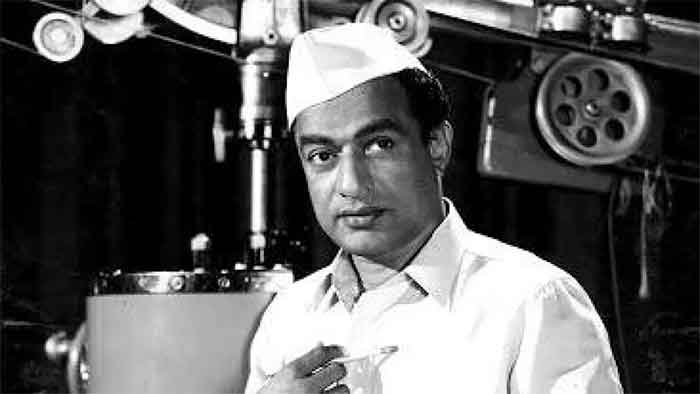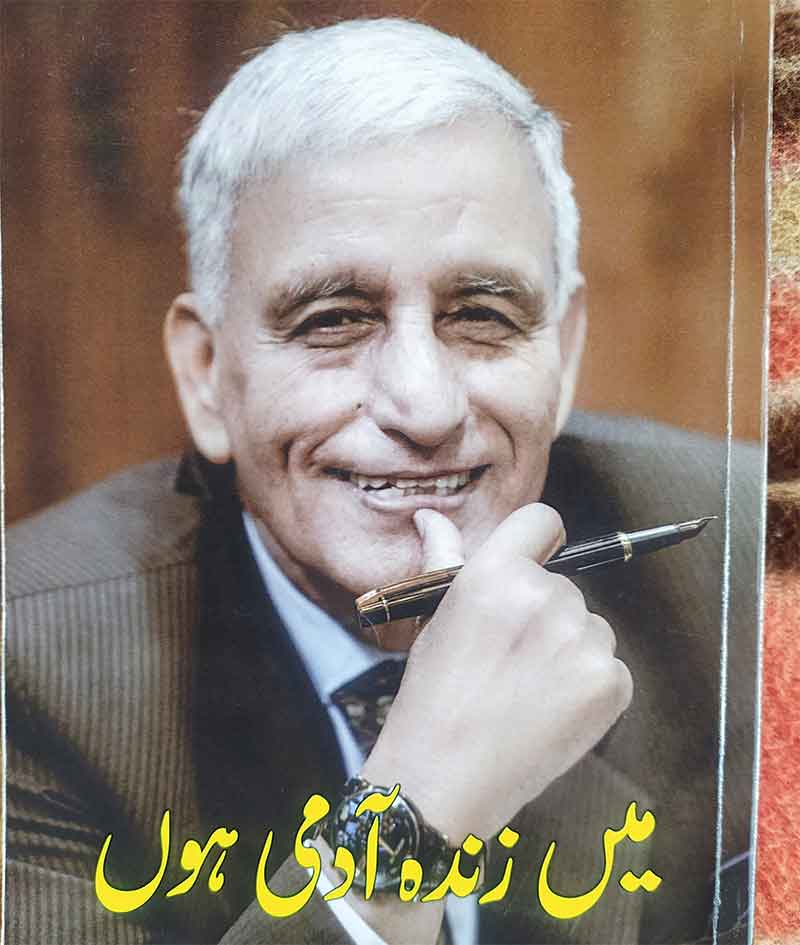
Ashok Rane, film critic and a jury member at several prominent international film festivals, was felicitated last evening by Prabhat Chitra Mandal, the film society now in its 54th year. That was on his winning the best film critic award in memory of Satyajit Ray instituted by the federation of film critics.
It was most appropriate as Rane has been its member for more than four decades and it was a major learning institution in a way for him as he could see so much of world cinema at its screenings and could discuss films with seniors and others.
It is also appropriate that Prabhat is named after the famous film company of V. Shantaram and his colleagues and present on the occasion was Kiran Shantaram, film society movement veteran and son of V Shantaram.
A highly insightful documentary on V Shantaram directed by Durga Jasraj, and produced by Kiran in 1994 was screened on the occasion.
V Shantaram was an amazing phenomenon who grew from scratch, started life as a repair man in the railways. He was also a major institution builder whose memory survives with his studios Prabhat in Pune, Rajkamal Kala Mandir in Mumbai and the Plaza cinema in Dadar, a landmark in Mumbai.
Interestingly, Kiran Shantaram is perhaps the only Gandhi cap wearing major public figure now in Mumbai. There are a few film families which are keeping alive the memory of film celebrities, Shantaram’s is one and Rinki Bhattacharya, daughter of the famed Bimal Roy is there and the Kapoors have built a wonderful memorial for Prithviraj.
Unfortunately, an excellent living memory of Raj Kapoor in the form of Raj Kapoor studio in Chembur in Mumbai, has been cynically razed by the rich family for some crores. This should have been a national treasure and there has not been a whimper from the film fraternity which with all is money has done nothing to create a memorial to the industry that has given them so much.
The documentary film on Shantaram, apart from a glimpse into his numerous films, has some wonderful observations from luminaries like Durga Khote, Satyajit Ray, Naushad and Shyam Benegal.
Ray describes Shantaram as a complete film maker. Indeed, Shantaram remains a wonder, he compressed so much talent in various aspects of cinema over several decades right from the silent film era. He had a tremendous grasp over technology and art. The title of the film calling Shantaram the Pioneer is most appropriate. Durga Khote is very graceful in her sari, her recording seems to have been done in her farm house and her English accent is good to the ear. She has left us a very good autobiography in Marathi Mee Durga Khote and plus there is writing on her by daughter in law Vijaya Mehta and others.
Prabhat film society was nurtured in is earlier years by Vasant or V.P Sathe, a major writer for Raj Kapoor, a nice, pleasant man and an encyclopaedia by himself. And then there was Sudhir Nandgaonkar, a political conservative but very liberal in the film movement and he actually was one of the pioneers of the Mumbai international film festival before it was hijacked by commercial interests.
Also present at the documentary screening were Santosh Pathare, a devoted senior leader of Prabhat film society, and critic Ganesh Matkari, whose grandfather Madhav Manohar, was an avid film watcher, Prabhat member and critic. He was a dhoti wielding veteran with the build of a wrestler. His brother Prabhakar Vaidya, they used different surnames, was a leading figure in the Communist movement and he wrote on Mahatma Phule and a lot more.
One aspect which seems to have attracted little attention in Indian cinema is that Kolhapur was a major film production centre, a much smaller town than the major metropolitan film centres like Mumbai, Kolkata, Madras and Lahore. One reason was Kolhapur had a rich tradition of art and culture, industry, craftsmanship and progressive politics nurtured by ruler Shahu Maharaj. Pioneer Phalke did his work in Nashik. This issue of small centres making such a major contribution to cinema perhaps merits a separate study.
Coming back to Rane.
These were real cine buffs, devoted to serious films. Khalid Mohamed, Rashid Irani and Rafique Baghdadi. In the seventies they used to sit in the first row in film society screenings so that no one else came in the way of watching the frames.
Khalid and I were colleague in Times of India. Later, I came to know Ashok Rane who was even more passionate about serious cinema. What makes him different is that he comes from an entirely different background, his father was a jobber, the immediate boss of textile workers. That is what makes his meteoric rise in films so remarkable. He has been a member of the jury at several prominent international films festivals in different parts of the world for several years. He is also a veteran film critic, documentary film maker. He says he does not believe in talking about his struggle but surely it needs to be taken note of.
He has spent hours in libraries in India and abroad reading about films, spent large amounts in buying expensive books on films, seeing films, denying himself money for other needs. He can remember frames from numerous films. That is why he can effortlessly get along with top film personaliies from different parts of the world.
From his book in Marathi Cinema Pahilela Manus (A man who has seen cinema) one gets to know not only about his adventures in films but also about working class culture.
Textile workers had their own theatre movement even in the textile town of Navsari in Gujarat bordering Maharashtra. There his father and uncle used to talk about music, theatre and films and from them Rane heard that they stood in line for eight days for the early talkie film Shyam Sunder made by Bhalji Pendharkar in 1932. They had to come back disappointed each day and got the ticket only on the ninth day. It was the first film to celebrate silver jubilee. His father’s job took him to the town of Khopoli in Raigad district. School life here began with shramdan , carrying cowdung, washing vessels and cleaning floors. In Khopoli he recalls seeing Rajendra Kumar during a film shooting, sitting without any complaint in extreme sultriness in a goods train
Around 1970 there were 117 cinema theatres in Mumbai and Rane says he saw films in all of them except in the red light district. On a rainy day he saw the film Caravan in a flooded lower stall in Bandra Talkies.
His serious film education began with Prabhat Chitra Mandal started by the likes of Sudhir Nandgaonkar and Dinkar Gangal and then came the intensive six week film appreciation course in the National Archives with the reputed Satish Bahadur. B.V.Dharap, owner of Alka Talkies, was a living archive of Hindi, Marathi, English films. Suresh Chhabria, Samik Bandopadhyaya and P.K. Nair were among other dedicated faculty members.
The film festival organised in Mumbai in 1981 to mark the golden jubilee of the Indian talkie at Akashvani theatre was another milestone in the study of 116 films from most Indian languages. He braved a stampede in a queue for tickets for the festival and these cost him more than his month’s salary. Ashok then worked in the personnel department in the Times of India and declined to accept the offer of a pass.
Ashok Rane learnt a lot from his association with numerous personalities including Basu Bhattacharya and Arun Khopkar. Basu used to fondly call him Tum Bada Badmash Hai. Basu’s house used to be full of visitors including Salil Chaudhari, Bikram Singh, Filmfare editor, Gulzar, Dina Pathak. Dom Moraes used to live there. Once while overlooking Joggers Park from the balcony of the house, Gulzar remarked that poor people walk because they have no money and here rich pay to walk.
Rane recalls that Rhishikesh Mukherjee resigned as chairman of the MAMI film festival when he heard it was sponsored by a cigarette and liquor company. The new organisers also ungratefully ignored the contribution of those who had built the Mumbai film festival culture.
Rane’s achievements are many sided. He has also made some fine documentaries including on the character of Apu of Satyajit Ray and on Anthony Gonsalves, the music arranger of note.
Vidyadhar Date is a senior journalist,culture critic and author of a book on public transport















































